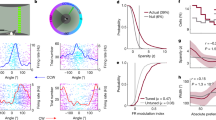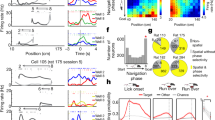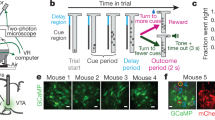Abstract
Primates interact with the world by exploring visual objects; they seek opportunities to view novel objects even when these have no extrinsic reward value. How the brain controls this novelty seeking is unknown. Here we show that novelty seeking in monkeys is regulated by the zona incerta (ZI). As monkeys made eye movements to familiar objects to trigger an opportunity to view novel objects, many ZI neurons were preferentially activated by predictions of novel objects before the gaze shift. Low-intensity ZI stimulation facilitated gaze shifts, whereas ZI inactivation reduced novelty seeking. ZI-dependent novelty seeking was not regulated by neurons in the lateral habenula or by many dopamine neurons in the substantia nigra, traditionally associated with reward seeking. But the anterior ventral medial temporal cortex, an area important for object vision and memory, was a prominent source of novelty predictions. These data uncover a functional pathway in the primate brain that regulates novelty seeking.
This is a preview of subscription content, access via your institution
Access options
Access Nature and 54 other Nature Portfolio journals
Get Nature+, our best-value online-access subscription
$29.99 / 30 days
cancel any time
Subscribe to this journal
Receive 12 print issues and online access
$209.00 per year
only $17.42 per issue
Buy this article
- Purchase on Springer Link
- Instant access to full article PDF
Prices may be subject to local taxes which are calculated during checkout




Similar content being viewed by others
Data availability
All data are available upon reasonable request from the corresponding author.
Code availability
All code is available upon request.
References
Jaegle, A., Mehrpour, V. & Rust, N. Visual novelty, curiosity, and intrinsic reward in machine learning and the brain. Curr. Opin. Neurobiol. 58, 167–174 (2019).
Wang, T. & Mitchell, C. J. Attention and relative novelty in human perceptual learning. J. Exp. Psychol. Anim. Behav. Process. 37, 436–445 (2011).
Ghazizadeh, A., Griggs, W. & Hikosaka, O. Ecological origins of object salience: reward, uncertainty, aversiveness, and novelty. Front. Neurosci. 10, 378 (2016).
Loewenstein, G. The psychology of curiosity: a review and reinterpretation. Psychological Bull. 116, 75 (1994).
Butler, R. A. Discrimination learning by rhesus monkeys to visual-exploration motivation. J. Comp. Physiological Psychol. 46, 95 (1953).
Berlyne, D. E. Novelty and curiosity as determinants of exploratory behaviour. Br. J. Psychol. 41, 68 (1950).
Cohen, J. Y., Haesler, S., Vong, L., Lowell, B. B. & Uchida, N. Neuron-type-specific signals for reward and punishment in the ventral tegmental area. Nature 482, 85–88 (2012).
Schultz, W., Dayan, P. & Montague, P. R. A neural substrate of prediction and reward. Science 275, 1593–1599 (1997).
Bromberg-Martin, E. S., Matsumoto, M. & Hikosaka, O. Dopamine in motivational control: rewarding, aversive, and alerting. Neuron 68, 815–834 (2010).
Lisman, J. E. & Grace, A. A. The hippocampal–VTA loop: controlling the entry of information into long-term memory. Neuron 46, 703–713 (2005).
Tapper, A. R. & Molas, S. Midbrain circuits of novelty processing. Neurobiol. Learning Memory 176, 107323 (2020).
Duszkiewicz, A. J., McNamara, C. G., Takeuchi, T. & Genzel, L. Novelty and dopaminergic modulation of memory persistence: a tale of two systems. Trends Neurosci. 42, 102–114 (2019).
Kakade, S. & Dayan, P. Dopamine: generalization and bonuses. Neural Netw. 15, 549–559 (2002).
Bunzeck, N. & Düzel, E. Absolute coding of stimulus novelty in the human substantia nigra/VTA. Neuron 51, 369–379 (2006).
Wittmann, B. C., Bunzeck, N., Dolan, R. J. & Düzel, E. Anticipation of novelty recruits reward system and hippocampus while promoting recollection. NeuroImage 38, 194–202 (2007).
Lak, A., Stauffer, W. R. & Schultz, W. Dopamine prediction error responses integrate subjective value from different reward dimensions. Proc. Natl Acad. Sci. USA 111, 2343–2348 (2014).
Schultz, W. Updating dopamine reward signals. Curr. Opin. Neurobiol. 23, 229–238 (2013).
Lak, A., Stauffer, W. R. & Schultz, W. Dopamine neurons learn relative chosen value from probabilistic rewards. eLife 5, e18044 (2016).
Dabney, W. et al. A distributional code for value in dopamine-based reinforcement learning. Nature 577, 671–675 (2020).
Bromberg-Martin, E. S. & Hikosaka, O. Midbrain dopamine neurons signal preference for advance information about upcoming rewards. Neuron 63, 119–126 (2009).
McHenry, J. A. et al. Hormonal gain control of a medial preoptic area social reward circuit. Nat. Neurosci. 20, 449–458 (2017).
Gunaydin, L. A. et al. Natural neural projection dynamics underlying social behavior. Cell 157, 1535–1551 (2014).
Ranganath, C. & Rainer, G. Neural mechanisms for detecting and remembering novel events. Nat. Rev. Neurosci. 4, 193–202 (2003).
Menegas, W., Babayan, B. M., Uchida, N. & Watabe-Uchida, M. Opposite initialization to novel cues in dopamine signaling in ventral and posterior striatum in mice. eLife 6, e21886 (2017).
Huang, X. & Weng, J. Novelty and reinforcement learning in the value system of developmental robots. (2002).
Oudeyer, P.-Y., Kaplan, F. & Hafner, V. V. Intrinsic motivation systems for autonomous mental development. IEEE Trans. Evolut. Comput. 11, 265–286 (2007).
Gottlieb, J., Lopes, M. & Oudeyer, P.-Y. in Recent Developments in Neuroscience Research on Human Motivation 149–172 (Emerald, 2016).
Lin, C. S., Nicolelis, M. A., Schneider, J. S. & Chapin, J. K. Jr. GABAergic pathway from zona incerta to neocortex: clarification. Science 251, 1162 (1991).
Lin, C. S., Nicolelis, M. A., Schneider, J. S. & Chapin, J. K. A major direct GABAergic pathway from zona incerta to neocortex. Science 248, 1553–1556 (1990).
Mitrofanis, J. Some certainty for the “zone of uncertainty”? Exploring the function of the zona incerta. Neuroscience 130, 1–15 (2005).
Wang, X., Chou, X.-l, Zhang, L. I. & Tao, H. W. Zona incerta: an integrative node for global behavioral modulation. Trends Neurosci. 43, 82–87 (2020).
Zhao, Z.-d et al. Zona incerta GABAergic neurons integrate prey-related sensory signals and induce an appetitive drive to promote hunting. Nat. Neurosci. 22, 921–932 (2019).
Tonelli, L. & Chiaraviglio, E. Enhancement of water intake in rats after lidocaine injection in the zona incerta. Brain Res. Bull. 31, 1–5 (1993).
Chometton, S. et al. The rostromedial zona incerta is involved in attentional processes while adjacent LHA responds to arousal: c-Fos and anatomical evidence. Brain Struct. Funct. 222, 2507–2525 (2017).
Ahmadlou, M. et al. A cell type-specific cortico-subcortical brain circuit for investigatory and novelty-seeking behavior. Science 372, 6543 (2021).
May, P. J. & Basso, M. A. Connections between the zona incerta and superior colliculus in the monkey and squirrel. Brain Struct. Funct. 223, 371–390 (2018).
Krauzlis, R. J., Lovejoy, L. P. & Zénon, A. Superior colliculus and visual spatial attention. Annu. Rev. Neurosci. 36, https://doi.org/10.1146/annurev-neuro-062012-170249 (2013).
Brown, M. W. & Aggleton, J. P. Recognition memory: what are the roles of the perirhinal cortex and hippocampus? Nat. Rev. Neurosci. 2, 51–61 (2001).
Murray, E. A. & Richmond, B. J. Role of perirhinal cortex in object perception, memory, and associations. Curr. Opin. Neurobiol. 11, 188–193 (2001).
Lauwereyns, J., Watanabe, K., Coe, B. & Hikosaka, O. A neural correlate of response bias in monkey caudate nucleus. Nature 418, 413–417 (2002).
Kim, H. F., Ghazizadeh, A. & Hikosaka, O. Separate groups of dopamine neurons innervate caudate head and tail encoding flexible and stable value memories. Front. Neuroanat. 8, 120 (2014).
Jutras, M. J. & Buffalo, E. A. Recognition memory signals in the macaque hippocampus. Proc. Natl Acad. Sci. USA 107, 401–406 (2010).
Zhang, K., Chen, C. D. & Monosov, I. E. Novelty, salience, and surprise timing are signaled by neurons in the basal forebrain. Curr. Biol. 29, 134–142.e133 (2019).
Tachibana, Y. & Hikosaka, O. The primate ventral pallidum encodes expected reward value and regulates motor action. Neuron 76, 826–837 (2012).
Matsumoto, M. & Hikosaka, O. Two types of dopamine neuron distinctly convey positive and negative motivational signals. Nature 459, 837–841 (2009).
Hollerman, J. R. & Schultz, W. Dopamine neurons report an error in the temporal prediction of reward during learning. Nat. Neurosci. 1, 304–309 (1998).
Joshua, M., Adler, A., Mitelman, R., Vaadia, E. & Bergman, H. Midbrain dopaminergic neurons and striatal cholinergic interneurons encode the difference between reward and aversive events at different epochs of probabilistic classical conditioning trials. J. Neurosci. 28, 11673–11684 (2008).
Eshel, N. et al. Arithmetic and local circuitry underlying dopamine prediction errors. Nature 525, 243–246 (2015).
Nakahara, H., Itoh, H., Kawagoe, R., Takikawa, Y. & Hikosaka, O. Dopamine neurons can represent context-dependent prediction error. Neuron 41, 269–280 (2004).
Babayan, B. M., Uchida, N. & Gershman, S. J. Belief state representation in the dopamine system. Nat. Commun. 9, 1891 (2018).
Fiorillo, C. D., Newsome, W. T. & Schultz, W. The temporal precision of reward prediction in dopamine neurons. Nat. Neurosci. 11, 966–973 (2008).
Matsumoto, M. & Hikosaka, O. Lateral habenula as a source of negative reward signals in dopamine neurons. Nature 447, 1111–1115 (2007).
Matsumoto, M. & Hikosaka, O. Negative motivational control of saccadic eye movement by the lateral habenula. Prog. Brain Res. 171, 399–402 (2008).
Matsumoto, M. & Hikosaka, O. Representation of negative motivational value in the primate lateral habenula. Nat. Neurosci. 12, 77–84 (2009).
Salas, R., Baldwin, P., De Biasi, M. & Montague, R. BOLD responses to negative reward prediction errors in human habenula. Front. Hum. Neurosci. 4, 36 (2010).
Bromberg-Martin, E. S. & Hikosaka, O. Lateral habenula neurons signal errors in the prediction of reward information. Nat. Neurosci. 14, 1209–1216 (2011).
White, J. K. et al. A neural network for information seeking. Nat. Commun. 10, 5168 (2019).
Xiang, J.-Z. & Brown, M. Differential neuronal encoding of novelty, familiarity and recency in regions of the anterior temporal lobe. Neuropharmacology 37, 657–676 (1998).
Haskins, A. L., Yonelinas, A. P., Quamme, J. R. & Ranganath, C. Perirhinal cortex supports encoding and familiarity-based recognition of novel associations. Neuron 59, 554–560 (2008).
Tamura, K. et al. Conversion of object identity to object-general semantic value in the primate temporal cortex. Science 357, 687–692 (2017).
Furtak, S. C., Wei, S. M., Agster, K. L. & Burwell, R. D. Functional neuroanatomy of the parahippocampal region in the rat: the perirhinal and postrhinal cortices. Hippocampus 17, 709–722 (2007).
Tomás Pereira, I., Agster, K. L. & Burwell, R. D. Subcortical connections of the perirhinal, postrhinal, and entorhinal cortices of the rat. I. Afferents. Hippocampus 26, 1189–1212 (2016).
Agster, K. L., Tomás Pereira, I., Saddoris, M. P. & Burwell, R. D. Subcortical connections of the perirhinal, postrhinal, and entorhinal cortices of the rat. II. Efferents. Hippocampus 26, 1213–1230 (2016).
Sommer, M. A. & Wurtz, R. H. Composition and topographic organization of signals sent from the frontal eye field to the superior colliculus. J. Neurophysiol. 83, 1979–2001 (2000).
Schall, J. D. The neural selection and control of saccades by the frontal eye field. Philos. Trans. R. Soc. Lond. B 357, 1073–1082 (2002).
Trageser, J. C. et al. State-dependent gating of sensory inputs by zona incerta. J. Neurophysiol. 96, 1456–1463 (2006).
Barthó, P. et al. Cortical control of zona incerta. J. Neurosci. 27, 1670–1681 (2007).
de Git, K. C. G. et al. Zona incerta neurons projecting to the ventral tegmental area promote action initiation towards feeding. J. Physiol. 599, 709–724 (2021).
Ma, T. P. Saccade-related omnivectoral pause neurons in the primate zona incerta. Neuroreport 7, 2713–2716 (1996).
Kita, T., Osten, P. & Kita, H. Rat subthalamic nucleus and zona incerta share extensively overlapped representations of cortical functional territories. J. Comp. Neurol. 522, 4043–4056 (2014).
Watson, C., Lind, C. R. & Thomas, M. G. The anatomy of the caudal zona incerta in rodents and primates. J. Anat. 224, 95–107 (2014).
Ljungberg, T., Apicella, P. & Schultz, W. Responses of monkey dopamine neurons during learning of behavioral reactions. J. Neurophysiol. 67, 145–163 (1992).
Morrens, J., Aydin, Ç., van Rensburg, A. J., Rabell, J. E. & Haesler, S. Cue-evoked dopamine promotes conditioned responding during learning. Neuron 106, 142–153.e147 (2020).
Costa, V. D., Tran, V. L., Turchi, J. & Averbeck, B. B. Dopamine modulates novelty seeking behavior during decision making. Behav. Neurosci. 128, 556–566 (2014).
Watabe-Uchida, M., Zhu, L., Ogawa, S. K., Vamanrao, A. & Uchida, N. Whole-brain mapping of direct inputs to midbrain dopamine neurons. Neuron 74, 858–873 (2012).
Daye, P. M., Monosov, I. E., Hikosaka, O., Leopold, D. A. & Optican, L. M. pyElectrode: an open-source tool using structural MRI for electrode positioning and neuron mapping. J. Neurosci. Methods 213, 123–131 (2013).
Ledbetter, M. N., Chen, D. C. & Monosov, I. E. Multiple mechanisms for processing reward uncertainty in the primate basal forebrain. J. Neurosci. 36, https://doi.org/10.1523/JNEUROSCI.1123-16.2016 (2016).
Dotson, N. M., Hoffman, S. J., Goodell, B. & Gray, C. M. A large-scale semi-chronic microdrive recording system for non-human primates. Neuron 96, 769–782. e762 (2017).
Dotson, N. M., Hoffman, S. J., Goodell, B. & Gray, C. M. Feature-based visual short-term memory is widely distributed and hierarchically organized. Neuron 99, 215–226. e214 (2018).
Monosov, I. E., Leopold, D. A. & Hikosaka, O. Neurons in the primate medial basal forebrain signal combined information about reward uncertainty, value, and punishment anticipation. J. Neurosci. 35, 7443–7459 (2015).
Yamamoto, S., Monosov, I. E., Yasuda, M. & Hikosaka, O. What and where information in the caudate tail guides saccades to visual objects. J. Neurosci. 32, 11005–11016 (2012).
Monosov, I. E. & Hikosaka, O. Regionally distinct processing of rewards and punishments by the primate ventromedial prefrontal cortex. J. Neurosci. 32, 10318–10330 (2012).
Mao, D. et al. Spatial representations in macaque hippocampal formation. bioRxiv, 2020.2010.2003.324848, https://doi.org/10.1101/2020.10.03.324848 (2020).
Markov, N. T. et al. A weighted and directed interareal connectivity matrix for macaque cerebral cortex. Cereb. Cortex 24, 17–36 (2014).
Ogasawara, T., Nejime, M., Takada, M. & Matsumoto, M. Primate nigrostriatal dopamine system regulates saccadic response inhibition. Neuron 100, 1513–1526. e1514 (2018).
Ungless, M. A. & Grace, A. A. Are you or aren’t you? Challenges associated with physiologically identifying dopamine neurons. Trends Neurosci. 35, 422–430 (2012).
Ongur, D. & Price, J. L. The organization of networks within the orbital and medial prefrontal cortex of rats, monkeys and humans. Cereb. Cortex 10, 206–219 (2000).
Carmichael, S. & Price, J. L. Limbic connections of the orbital and medial prefrontal cortex in macaque monkeys. J. Comp. Neurol. 363, 615–641 (1995).
Carmichael, S. T., Clugnet, M. C. & Price, J. L. Central olfactory connections in the macaque monkey. J. Comp. Neurol. 346, 403–434 (1994).
Kondo, H., Saleem, K. S. & Price, J. L. Differential connections of the temporal pole with the orbital and medial prefrontal networks in macaque monkeys. J. Comp. Neurol. 465, 499–523 (2003).
Fisher, R. A. Breakthroughs in Statistics 66–70 (Springer, 1992).
Rolls, E. T. & Xiang, J.-Z. Reward-spatial view representations and learning in the primate hippocampus. J. Neurosci. 25, 6167–6174 (2005).
Monosov, I. E., Trageser, J. C. & Thompson, K. G. Measurements of simultaneously recorded spiking activity and local field potentials suggest that spatial selection emerges in the frontal eye field. Neuron 57, 614–625 (2008).
Monosov, I. E., Sheinberg, D. L. & Thompson, K. G. Paired neuron recordings in the prefrontal and inferotemporal cortices reveal that spatial selection precedes object identification during visual search. Proc. Natl Acad. Sci. USA 107, 13105–13110 (2010).
Salzman, C. D. & Newsome, W. T. Neural mechanisms for forming a perceptual decision. Science 264, 231–237 (1994).
Ballesta, S., Shi, W., Conen, K. E. & Padoa-Schioppa, C. Values encoded in orbitofrontal cortex are causally related to economic choices. Nature 588, 450–453 (2020).
McIntyre, C. C. & Grill, W. M. Selective microstimulation of central nervous system neurons. Ann. Biomed. Eng. 28, 219–233 (2000).
McIntyre, C. C. & Grill, W. M. Extracellular stimulation of central neurons: influence of stimulus waveform and frequency on neuronal output. J. Neurophysiol. 88, 1592–1604 (2002).
Acknowledgements
This work is supported by the National Institute of Mental Health under award numbers R01MH110594 and R01MH116937 to IEM, and by the McKnight Foundation award to IEM. The optimization of array technology was supported by the Defense Advanced Research Projects Agency (DARPA) Biological Technologies Office (BTO) ElectRx program under the auspices of D. Weber through the CMO grant/contract no. HR0011-16-2-0022. We are grateful to K. Kocher for great animal care and animal training, and to A. Kepecs, E. S. Bromberg-Martin and C. Padoa-Schioppa for giving us valuable suggestions to improve this manuscript. We are also grateful to B. Goodell and C. M. Gray for technical and scientific assistance with high channel-count recording arrays, to D. W. Moran for assistance with perfusion, and to FD Neuro Technologies for assistance with tissue processing.
Author information
Authors and Affiliations
Contributions
T.O., I.E.M. and Y.F. performed the neuronal recordings. T.O., F.S., K.Z. and J.P. analyzed the data. I.E.M. wrote the manuscript. T.O., J.P., Y.F. and I.E.M. discussed and revised the manuscript. A.J. analyzed the anatomical data. I.E.M. guided and conceptualized the research.
Corresponding authors
Ethics declarations
Competing interests
The authors declare no competing interests.
Additional information
Peer review information Nature Neuroscience thanks Mitsuko Watabe-Uchida and the other, anonymous, reviewer(s) for their contribution to the peer review of this work.
Publisher’s note Springer Nature remains neutral with regard to jurisdictional claims in published maps and institutional affiliations.
Supplementary information
Supplementary Information
Supplementary Figs. 1–21
Rights and permissions
About this article
Cite this article
Ogasawara, T., Sogukpinar, F., Zhang, K. et al. A primate temporal cortex–zona incerta pathway for novelty seeking. Nat Neurosci 25, 50–60 (2022). https://doi.org/10.1038/s41593-021-00950-1
Received:
Accepted:
Published:
Issue Date:
DOI: https://doi.org/10.1038/s41593-021-00950-1
This article is cited by
-
A neural mechanism for conserved value computations integrating information and rewards
Nature Neuroscience (2024)
-
Curiosity: primate neural circuits for novelty and information seeking
Nature Reviews Neuroscience (2024)
-
Control of feeding by a bottom-up midbrain-subthalamic pathway
Nature Communications (2024)
-
Neurocircuitry of Predatory Hunting
Neuroscience Bulletin (2023)
-
Salience memories formed by value, novelty and aversiveness jointly shape object responses in the prefrontal cortex and basal ganglia
Nature Communications (2022)



